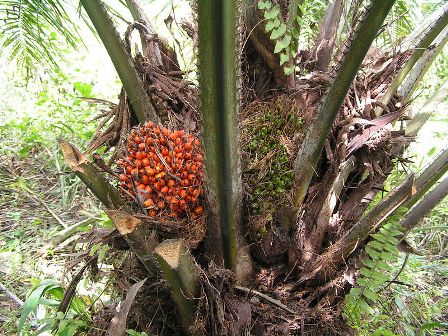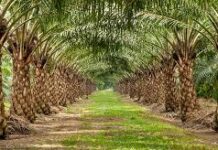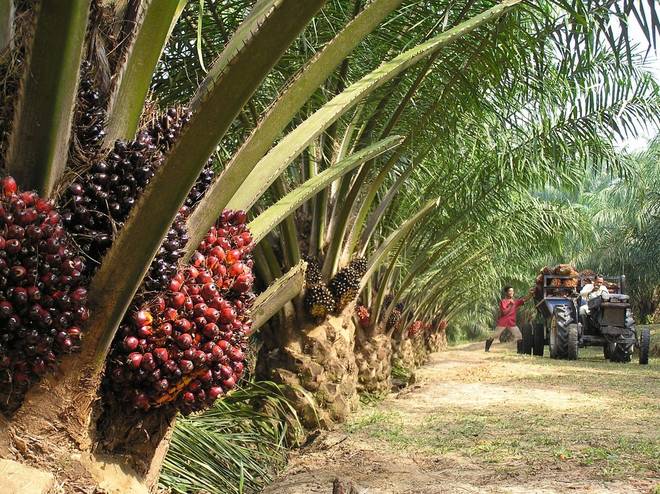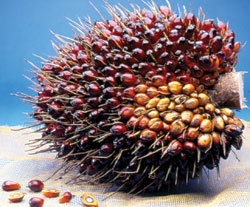1. Technical aspects of oil palm :
Oil Palm (Elaeis guinensis Jacq.) is a native of Guinea Coast of West Africa. It belongs to family Palmae and tribe Cocoineae. Oil palm is the highest oil producer among perennial oil yielding crops. It produces two distinct oils viz., palm oil (extracted from meso carp of fresh fruits) and palm kernel oil (from kernel). Palm oil has excellent health attributes. It is rich in vitamins A and E and is cholesterol free. Palm oil can be used in formulation of margarine and cooking fat such as vanaspathi. It can be used in manufacture of biscuits, ice creams, soaps, detergents, and shampoos and also as frying fat. Palm kernel oil has variety of industrial uses.
1.1 Varieties: Broadly, there are three varieties viz., Dura, Piscifera and Tenera. Tenera, a hybrid of Dura and Piscifera is characterized by a thin shell and medium to high mesocarp (65-90%) and high oil content (16-20%). It is a commercially cultivated variety.
1.2 Soil and climatic requirements: Deep well-drained medium loam soil, rich in humus is the most suitable for oil palm cultivation. Oil palm requires a well distributed rainfall of 2500 to 4000 mm per annum and a temperature range of 19-33° C. It is a water-loving crop and it requires adequate irrigation. The crop responds well to drip irrigation and yields are reported to increase by at least 20%.
1.3 Planting: Oil palm is planted in triangular system at a spacing of 9 X 9 X 9 m accommodating 143 plants in a hectare. Planting can be done in any season. However, the best period is June to December. Seedlings of 10-14 months age are best suited for planting.
1.4 Irrigation : Oil palm requires adequate irrigation, as it is a fast growing crop with high productivity and biomass production. For yielding palms of above three years age, a minimum of 150 litres per day is required. In older plantations the requirement goes upto 20 litres per day.
The crop responds well to drip or micro sprinkler irrigation particularly when water is limited. If drip is installed four drippers have to be placed for each palm. If each dripper discharges 8 litre per hour, 4-5 hour of irrigation is sufficient to discharge 160 litre per day. Drip irrigation increases the productivity by 15-20 per cent, reduces wastage of water, and requires less power/fuel per irrigation compared to conventional irrigation methods. It is important to note that any physiological stress shifts sex ratio in favour of male flowers and consequently the productivity is reduced.
1.5 Nutrition: Fertilizers are preferably applied in 3-4 split doses. Application of green leaf manure or compost is advantageous, especially where the soils are poor in organic matter.
1.6 Inter crop: During the initial stages of plantation in oil palm i.e., upto 3rd year, some of the light feeder inter crops such as pulses, cereals, vegetables, grasses etc., can be grown. Inter crop should be grown 1 m. away from the basin in 1st year of oil palm plantation. In two-year-old plantations, it should be grown 2 m away, followed by 3 m in the third year plantations.
1.7 Yield : Oil palm starts bearing from 4th year onwards and its economic life varies from 30 to 35 years. The yield of oil palm varies according to age and management. Under average management conditions in a mature plantation (8 to 9 years old), yield of 15-18 tonnes of fresh fruit bunches (FFBs) per hectare is expected. Under good maintenance and management, yield upto 25-30 tonnes of FFBs per hectare is possible.






